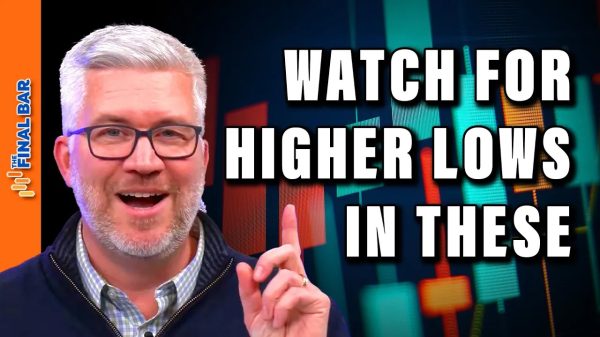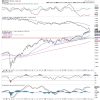Below are abbreviated remarks I delivered before the US Joint Economic Committee on March 12, 2024. Read my full testimony “The Fiscal Situation of the United States.” Watch my testimony at 1:12:19–1:17:25 with responses to member questions at 1:31:45–1:32:54, 2:11:25–2:12:20, and 2:32:23–2:33:31.
Chair Martin Heinrich, Vice Chair David Schweikert, and members of the committee:
Thank you for inviting me to testify today. My name is Romina Boccia, and I am the director of budget and entitlement policy at the Cato Institute. The views I express in this testimony are my own and should not be construed as representing any official position of my employer.
I will make three main points:
First, higher spending is driving the growth in the public debt.
Second, the growth in Medicare and Social Security spending is the primary driver of the growth in the public debt.
Third, slowing the growth in spending must be coupled with pro‐growth policies to secure America’s fiscal future and economic prosperity.
Our nation’s debt is growing at an alarming rate, with the Congressional Budget Office (CBO) projecting that debt borrowed in credit markets will exceed 170 percent of gross domestic product (GDP) in the next 30 years.
Current fiscal projections threaten Americans with higher taxes, reduced economic growth, higher interest rates, stifling inflation, and the tail risk of a severe fiscal crisis that exacerbates all these issues.
Even under fantastic revenue projections, spending‐driven debt growth threatens US fiscal stability and Americans’ economic security. Despite CBO’s highly unrealistic projections about tax revenues rising by 50 percent over the next 10 years, spending will continue to outpace revenue. Baked into CBO’s baseline is the assumption that the Tax Cuts and Jobs Act will expire as scheduled under current law when neither political party has demonstrated an appetite for allowing that to happen.
Even taking CBO’s 10‐year projections at face value, comparing them with historical spending and revenue averages highlights the unsustainability of current spending growth. Spending is projected to exceed 24 percent of GDP by 2034, compared to a 50‐year average of 21 percent of GDP. Meanwhile revenues would also exceed their historical average of 17.3 percent of GDP, but by much less, just shy of 18 percent of GDP. Peacetime deficits of 6 percent of GDP are too high and not sustainable for long.
What’s driving this growth in federal spending?
Federal health care programs and Social Security are the biggest spending growth drivers, alongside increasing debt service costs. Health care and Social Security are responsible for nearly two‐thirds of the growth in spending over the next 10 years, followed by interest costs.
Over the longer‐term 30‐year spending window, Social Security, health care programs, and interest costs continue to pose the biggest spending pressures, threatening to drive federal spending to 30 percent of GDP, from a 50‐year historical average of 21 percent of GDP.
That would be a massive expansion in the size of government that could only be financed by higher taxes on all Americans—not just the wealthy. There isn’t enough money at the very top of the income distribution to make that math work.
As health care and Social Security spending balloon as a percentage of the economy, every other major budget category declines or stabilizes over the same 30‐year period. Looking out yet further, the financial report of the US government details how Medicare and Social Security’s funding shortfalls are responsible for the entire long‐term unfunded obligation. You read that correctly. The 75‐year gap between noninterest spending and revenue collection of close to $74 trillion can be attributed to Medicare and Social Security—alone.
The key drivers of rising US deficits and debt are obvious.
Congress cannot effectively address the short‐term or long‐term growth in the federal debt without slowing the growth in old‐age benefit programs and health care spending, or massively raising taxes on all Americans, bringing the US closer to European‐style tax levels.
As Congress seeks to address the debt problem, legislators must not lose sight of preserving the economy’s capacity to grow. Shortsighted policies that raise taxes on investment and work can undermine debt stabilization if such policies dampen growth.
Spending‐based deficit reduction, especially targeted at social and entitlement programs, is most effective at sustainably reducing deficits and the growth in the debt as a percentage of GDP. While revenues are likely to be part of any politically realistic debt‐reduction proposal, legislators should focus on increasing revenues from economic growth and closing special interest loopholes that distort markets by picking political winners and losers.
As bleak as the US fiscal outlook is, there is light at the end of the tunnel. The House Budget Committee recently passed the Fiscal Commission Act, which seeks to stabilize the debt over 15 years, educate the public on the nation’s deteriorating fiscal state, and improve the Medicare and Social Security trust funds’ solvency over a 75‐year window. This is a positive step.
It would be even more promising if Congress designed a fiscal commission based on the successful Base Realignment and Closure Commission, or BRAC, with independent experts, executive involvement, and fast‐track authority to allow for default adoption of a commission plan.
The fiscal state of our nation is weak and worsening. Congress must act to reduce the growth in spending on health care and old‐age benefits to secure a free, prosperous, and secure United States.
I look forward to your questions.
Read more about the Fiscal Commission Act of 2024 in “House Budget Committee Advances Fiscal Commission to Address Government Spending and Debt.”






















